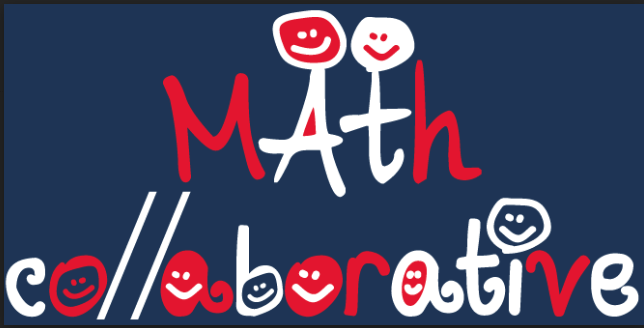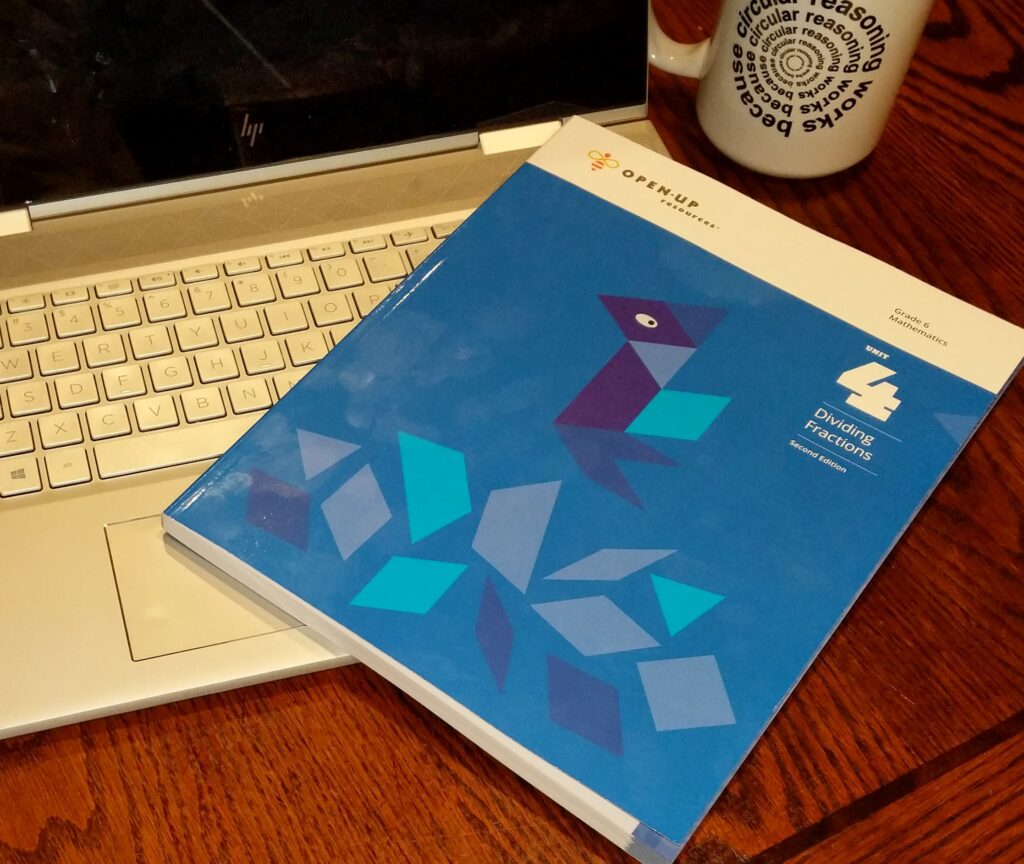
This morning my mother and I spent some time looking at old 5th and 6th grade textbooks at the Columbus Regional Math Collaborative to see how fraction multiplication and division has been taught over the years. We were surprised to find an impressive gap when it came to teaching fraction division. But before we left, I discovered a new resource that I am very excited about!
You might be wondering why I took my mother – she is a former math teacher (isn’t that cool?… I grew up to be my mom!), and we both needed to get out of the house during the pandemic. So why not go and play with math toys and curriculum? We thought it would be pretty safe since schools are on a winter holiday, but the university’s Math Collaborative was open. And we were right! We spent a couple hours in math bliss by ourselves.
What’s the Math Collaborative? It is a fantastic resource for math teachers in west central Georgia that is supported by Columbus State University. They provide professional development for teachers from Pre-K to higher education, and they have a fun library filled with every math manipulative you could want: children’s literature for math teaching, teaching tools, and of course, a curriculum library!

The curriculum library is filled with many texts including Everyday Mathematics, Math Trailblazers and MathScapes, to name a few. Many topics covered in the texts had engaging activities across many topics, which distracted my mother from helping me look for fraction division and multiplication. I was disappointed in the amount of time most texts devoted to fraction division as I moved between the curricula for both 5th and 6th grades. In the teacher’s guides and problems, most spent ample time on fraction multiplication but not division. Most commonly the books briefly introduced the measurement model of division, and a few explored the common denominator solution method.
I snapped photos of several pages of texts to analyze later and was turning to go when I saw a newly opened box of texts. There it was! A 160+ page workbook devoted to Dividing Fractions!
While I have not used it with children, I’m initially impressed and excited about it. I spent two-hours and sipped down two-cups of tea reading through the strategically designed questions that allow children to explore meanings of division, consider the effect the size of the divisor and dividend has on a quotient, and employ pattern blocks and fraction strips to make meaning out of fraction division and multiplication. The problems naturally oscillate between multiplication and division, so children develop an understanding of the relationship between the two, rather than treating them as separate topics.
Illustrative Mathematics designed this for 6th grade mathematics, so it introduces fractions divided by fractions, but it would be valuable for any 5th grade teacher to see the approach.
I would love to know if any of you have used the resource, which is an open and free resource available to teachers!! It is called:
Open-Up Resources by Illustrative Mathematics Unit 4 Dividing Fractions
The only stumbling block I have identified so far is when the authors move from problems that involve fractions divided by fractions that result in whole number quotients (e.g., 1 1/2 ÷ 3/4 = 2) to problems that result in fractional quotients (e.g., 3/8 ÷ 1/2 = 3/4). Students typically struggle to identify the “whole” in those problems, and I don’t see much attention devoted to it.
My question to you, dear reader, have you used it? What do you think? Let me know! Until then, I’ll keep reading and testing it.

